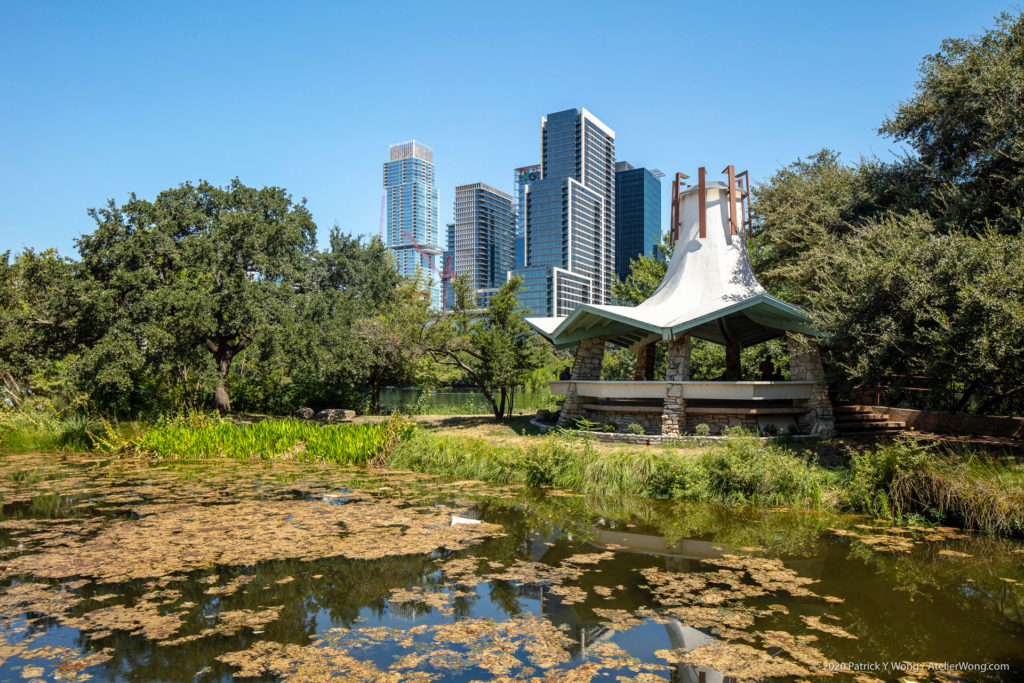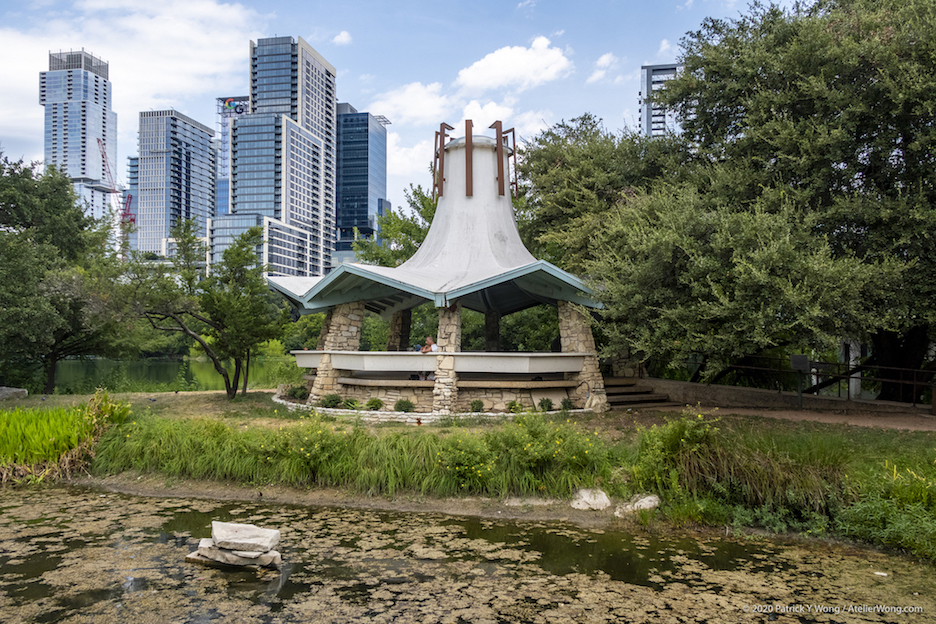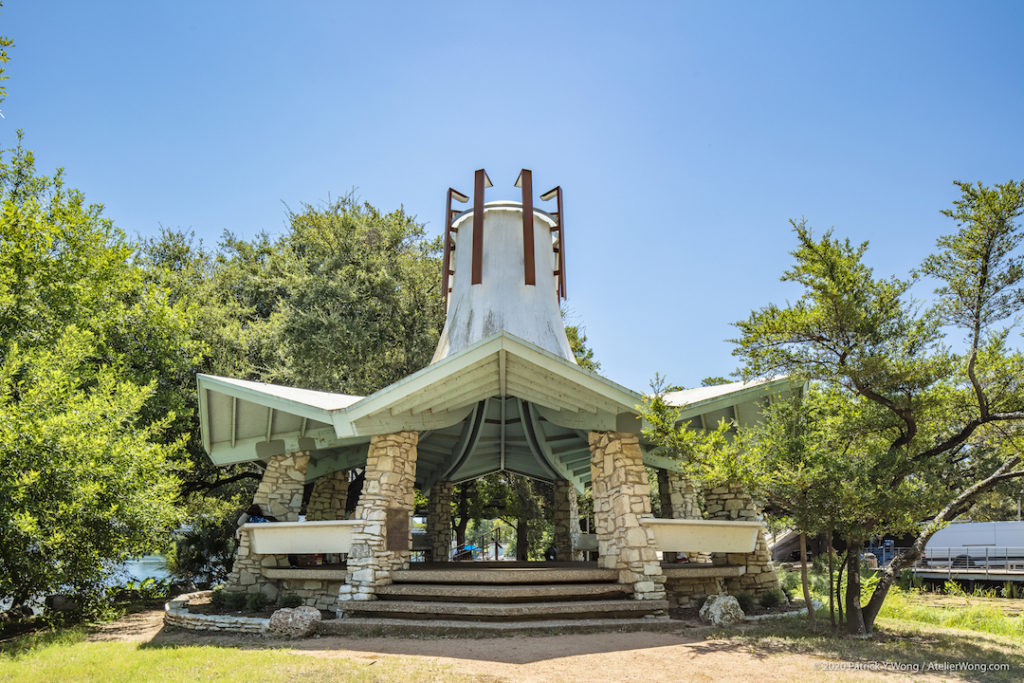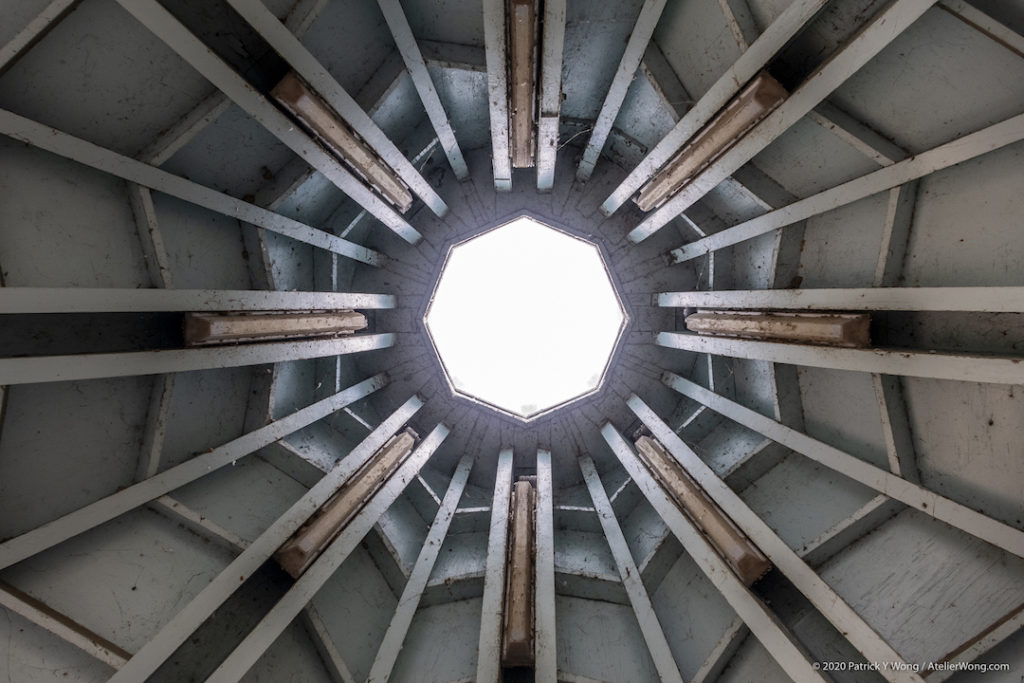Perched on the south shore of Lady Bird Lake, this delightful space-age structure is an artful testament to the role of women in shaping Austin’s built environment. Named after Fannie Davis, a charter member of the Austin chapter of the National Association of Women in Construction (NAWIC), the gazebo’s distinctive canopy is meant to recall the shape of an upturned morning glory blossom.
After the construction of the Longhorn Dam, a coalition of women-led groups developed a vision for transforming miles of floodwater-ravaged downtown riverbanks into the urban oasis before you today. NAWIC spearheaded the effort to construct the gazebo as a destination to attract people to the shoreline in the grand tradition of architectural follies (ornamental structures built purely for pleasure). Though commonplace today, the concept of a gazebo as a place to simply enjoy the view—to “gaze”—was so foreign at the time that a journalist writing about the project for the Austin American-Statesman took great pains to explain the origins and meaning of the distinctly un-Texan term (“Gazebo Fund Bid is Launched Here,” Austin American-Statesman, January 9, 1966, as quoted in the 2019 National Register of Historic Places registration form).
As the first public structure to be built on the lakeshore, the gazebo was made possible through a combination of community fundraising and donations of materials and labor by local contractors. NAWIC president Loretta “Lori” Nill recruited her husband to draw plans for the octagonal structure, which evolved from a heavy mushroom-shaped dome into an exuberant white canopy composed of folded plates and ridges in the shape of a hyperbolic paraboloid. The canopy is perched upon a base of limestone-clad angled columns and concrete benches in a nod to traditional rustic park architecture.
Supported by curved glued-laminated (glulam) wood beams, the canopy and turret exemplify the Googie style, a branch of mid-century architecture whose streamlined forms were inspired by Space Age fervor (it’s no coincidence that the gazebo was completed the same year as the Apollo 11 moon landing). The upswept planes of the roof end in a turret that was later capped with a clear bubble dome.
Over the years, members of the NAWIC have remained ardent in their protection of the gazebo, overseeing numerous repairs and staving off threats of demolition. In 2020, their efforts were rewarded with the structure’s listing on the National Register of Historic Places, ensuring that this fanciful floral folly will continue to bloom for generations to come. – Bud Franck





